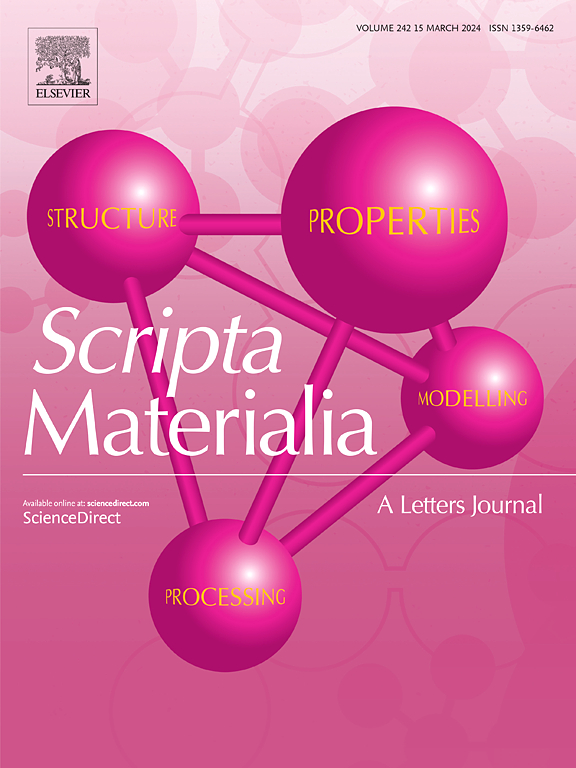Ti-Ni基形状记忆合金的本征预应变效应
IF 5.3
2区 材料科学
Q2 MATERIALS SCIENCE, MULTIDISCIPLINARY
引用次数: 0
摘要
形状记忆合金(sma)中的形状记忆效应(SME)是由Af以下的变形和位错引起的预应变效应(PSE)引起的。我们系统地研究了小的预应变(< 3.8%,平均马氏体转变应变)对Ti49Ni45.7Cu4.9Cr0.4 SMA的影响,该SMA具有很强的位错抵抗(在马氏体转变过程中引入的可忽略的位错)。热循环后功能疲劳消失,反向相变去除PSE后相变特性不变。在预应变较小的情况下,透射电镜观察到马氏体仍保持孪晶(多畴),但相变特征温度升高。因此,将其定义为本然PSE (IPSE),这与通常认为PSE仅归因于脱孪生(单域)的弹性能量释放相反。IPSE的产生可以用预先确定的和重新定向的马氏体受到周围约束而产生的局部应力场来解释。我们的研究结果阐明了对PSE的理解,从而在sma中与SME相关。本文章由计算机程序翻译,如有差异,请以英文原文为准。

Intrinsic pre-strain effect in Ti-Ni based shape memory alloys
Shape memory effect (SME) in shape memory alloys (SMAs) results from deformation below Af, accompanying pre-strain effect (PSE) which was usually implicated by dislocations. We systematically investigate the effects of small pre-strain (<3.8 %, average martensitic transformation strain) in Ti49Ni45.7Cu4.9Cr0.4 SMA with strong dislocation resistance against (negligible dislocations introduced during) martensitic transformations. It is demonstrated by the disappearance of functional fatigue upon thermal cycling, and unchanged transformation characteristics after removing PSE by reverse transformation. With small pre-strain, martensites remaining twinned (multi-domain) by TEM, however exhibit increased reverse transformation characteristic temperatures. It is thus defined as intrinsic PSE (IPSE), which is contrast to the common belief that PSE is solely attributed to elastic energy releasing of detwinning (single-domain). The IPSE is explained by local stress field raised by surrounding constraints on the pre-detwinned and reoriented martensites. Our findings shed lights on the understandings of PSE and thus associated SME in SMAs.
求助全文
通过发布文献求助,成功后即可免费获取论文全文。
去求助
来源期刊

Scripta Materialia
工程技术-材料科学:综合
CiteScore
11.40
自引率
5.00%
发文量
581
审稿时长
34 days
期刊介绍:
Scripta Materialia is a LETTERS journal of Acta Materialia, providing a forum for the rapid publication of short communications on the relationship between the structure and the properties of inorganic materials. The emphasis is on originality rather than incremental research. Short reports on the development of materials with novel or substantially improved properties are also welcomed. Emphasis is on either the functional or mechanical behavior of metals, ceramics and semiconductors at all length scales.
 求助内容:
求助内容: 应助结果提醒方式:
应助结果提醒方式:


